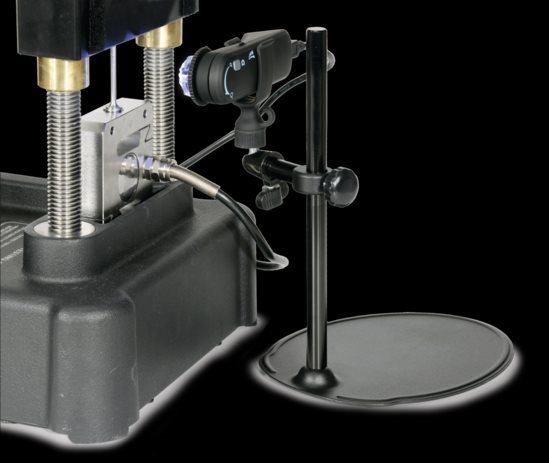How do you do a lab prac if you can't touch the equipment and you have to stay two meters away from your lab partner? In 2020 the answer was: you don't. Education department policy was demonstrations, only by the teachers.
Now, a demonstration can be very effective and can engage the learners. Unlike a video, it can be modified and customised, and then applied directly to the curriculum in real time. (Also, the learners must be heartily sick of videos by now!) But a teacher demo lacks the investigative component. A good lab is more about the journey than the destination. Students learn most from their repeated trials and their errors – the old adage that failure is a better teacher than success. The general problem with a teacher demo is it tends to be the whole journey in one motion. It can be very helpful but a lot of learning is lost and students do not develop their practical science skills.
Also, the particular problem with a teacher demonstration in 2021 is the distance. Learners can’t crowd around the apparatus anymore. A demo typically consists of experimental material with some measurement instruments, and the learners can’t really see either part.
What to do?
Well, an option is to use sensors: instead of a thermometer, a temperature sensor, instead of litmus paper, a pH probe. Sensors can be displayed on many devices: tablets, computers, projectors, monitors, Smartboards etc.-even the learners’ phones (if they are not too busy texting each other). Apart from being much more visible this way, sensors can also capture information where traditional instruments fall short. The classic example is a magnet dropping through a coil – the meter shows a needle flick, but the voltage sensor captures the full range of induction, with thousands of measurements per second. And sensors can do the painful dog-work in a lab. Below is a lab on aquatic pH for different light and temperature levels. The sensors take measurements automatically over a period of hours and the whole class can monitor the change on a real time graph.

There are also free work-sheets available for teachers and learner to use while observing these measurements onscreen. Learners may not develop their hands-on skills, but at least they can work on scientific observation and investigation.
But what about the equipment? Sometimes a learner needs to see a physical change at the same time as the measurement. Technology can help with that as well.
This Microscope Camera includes a stand, built in adjustable LED lighting, and has a 60x Optical Zoom. You can see even the tiniest changes during an experiment (as pictured for stress and strain) or else use it as a working microscope for Life Science activities.
“This is not 1918! We have tools now which weren’t available back then.” That was the message from the WHO panellists during their recent meeting on the South African Covid variant. We just have to be careful and flexible and make good use of the latest resources. The same applies to science in the classroom in 2021.
For information on sensor availability and pricing, as well as the microscope camera, please mail me at az.oc.trep@retep or visit www.pertindustrials.com.












































